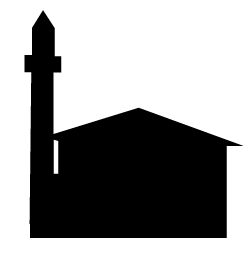Chao
Chao Mosque
Chao mosque, like most in Upper Adjara, was built by local architects and decorated shortly thereafter by Laz craftsmen invited from Lower Adjara. After Soviet authorities ordered the minaret demolished in 1936, the mosque was converted into a warehouse and the adjacent madrasa became the village “social club.” The latter continues to be an enthusiastically used institution. Local funds and a few outside donations, such as carpets from Batumi and exterior corrugated metal siding from Turkey, supported Chao mosque’s post-Soviet renovation. Despite a decidedly contemporary pastel color scheme and stencil paintings, the interior is filled with traditional cornstalk murals (a recurring motif for the region also found at Akho, Dghvani, and Ghorjomi). The only part of the interior yet to be repainted is the dome; its dark lacquered wood is a sharp contrast to the bright murals on the walls below. Although the village of Chao is currently in sustained economic condition, rural depopulation poses an ongoing threat to both the mosque and the community. Many families relocated after a 1988 landslide, leaving Chao mosque with fewer attendees and diminishing support for the building’s ongoing maintenance.
DISTRICT: Khulo
LOCATION: 41°37'12.8"N 42°17'34.4"E
POPULATION: 212
CONSTRUCTION DATE: 1909-1912 (hijri 1326-1330)
RENOVATION DATE(S): 1993-1995
CRAFTSMEN: Laz Craftsmen From Batumi/Gonio
MINARET: Yes (Original demolished 1936)

